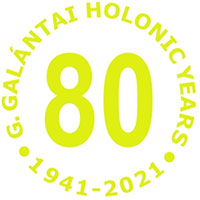Judit Geskó (H)
Those years in the Museum of Fine Arts were interesting.
Which years exactly? The 80s, what else?
Eighty. I said in a video interview I gave when we celebrated Galántai’s 70th birthday how surprised I was when Gyuri’s wife, Juli Klaniczay, told me ten years ago that Gyuri would soon be seventy. This time I’m not even surprised.
I met Galántai at the exhibition opening of Miklós Erdély’s Indigo workshops. Miklós ran a drawing workshop in the Museum of Fine Arts between 1981 and 1983. He had no commissions by then; he was even deprived of the opportunity to lay mosaics. Our director at the time, Klára Garas, said yes to my crazy idea to let Dóra Maurer and Miklós Erdély work in the museum building and András Böröcz and László Révész organise an action. My friend, ZsuzsaSimon (who I helped with the operation of the Rabinec Gallery), organised the actions of Ákos Birkás and Judit Kele. Dóra Maurer organised a photo workshop – to this day the 16 mm film she and her students made is the only document of significance about the Russian Avant-garde exhibition in 1981, where Hungarian museum-goers had the first chance to see paintings by Kandinsky and Malevich (the graphic material of which, organised from private collections, is now in the collections of the Museum of Fine Arts). For two years Miklós and the members of the Indigo group came to the museum every Friday: one week they did some drawing (Drawing for Gallerists, Spoilt drawing, etc.), and the other week they analysed the drawings. All that was learnt here formed the core of the Van Gogh in Budapest exhibition I later organised (Distorted drawing). The Indigo drawings made in those two years were displayed in one of the side rooms of the museum. Some were exhibited in moulded plastic frames, some under glass plates.
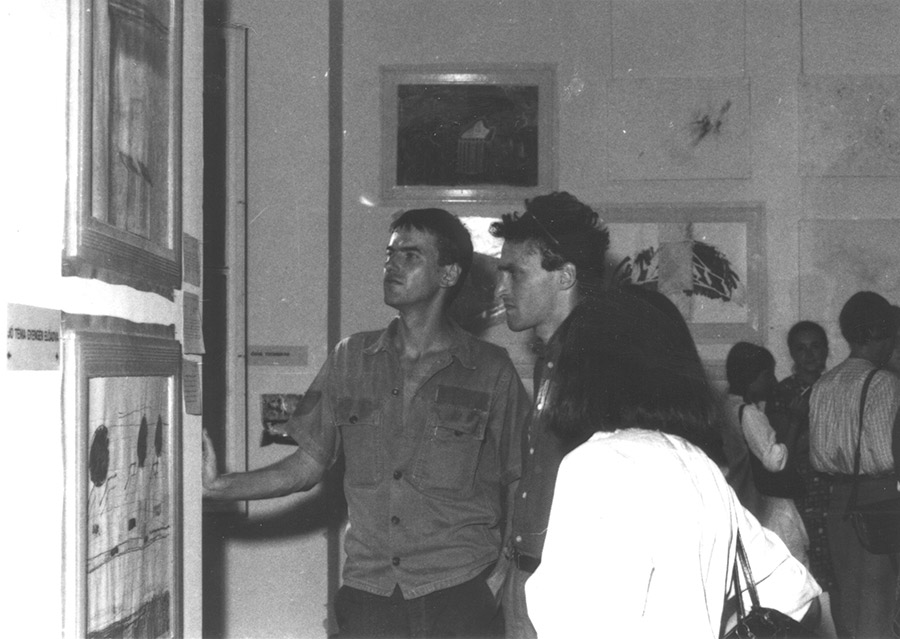
Well, I met György Galántai at the opening of that exhibition. I took several photos of him, Juli and his brother-in-law, historian Gábor Klaniczay. At the opening Gyuri engaged in a profound discussion with two of his colleagues, Ivan Ladislav Galeta and Miklós Erdély.They discussed the aesthetic questions related to the moulded plastic frames designed by János Sugár. Thanks to conversations like this, I soon realised that the curator’s role had to be dealt with carefully. This was not so evident in a classical museum like ours. Fortunately, a few non-conformists also worked at the museum; they were the doyens of the profession.
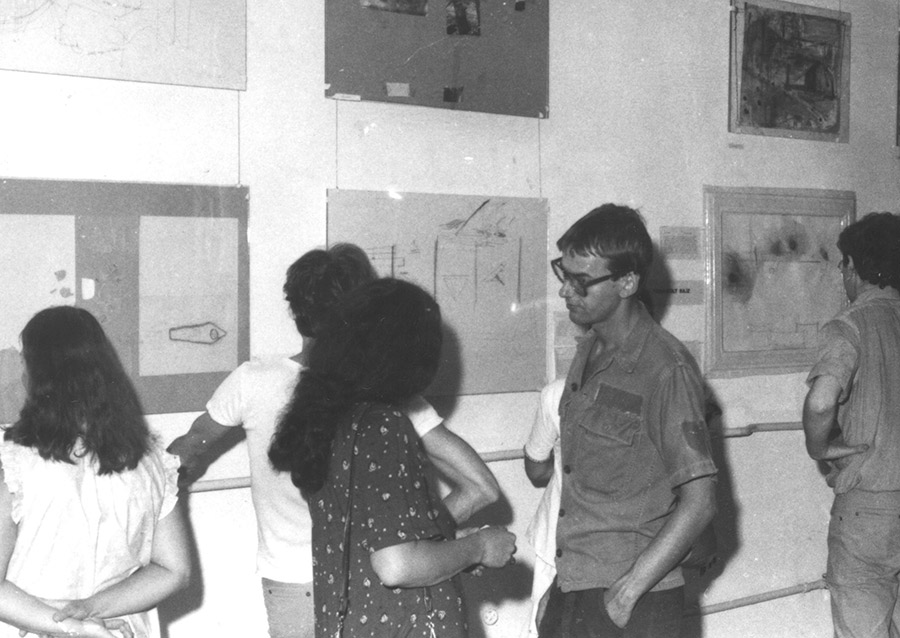
The idea of the Stamp Images exhibition of 1987 was conceived by Gyuri. By then he had built an incredibly extensive network of acquaintances, colleagues and friends. Seeing the name of the Museum of Fine Arts in the project was a catalist for the artists too so the artworks were literally flooding into Gyuri’s home at Frankel Leó Street and into the museum around 1984-86. We received so many sheets that Gyuri and I had to decide whether to go against the previous basic rule and start selecting the works. Mail Art had an unwritten rule: all the works submitted to its actions were exhibited. However, the beautiful Art Deco exhibition hall designed by Ede Toroczkai-Wiegand only had space for 250 sheets. Our decision was more than welcomed by Géza Perneczky, who wrote an excellent study for the catalogue: he suggested that “We should create a scandal!” In those days a similar, staged scandal in New York caused an amazing stir and success. Géza, who lived in Cologne, first found it hard to understand that a similar scandal in Budapest would severely damage the slow process of opening up that was beginning in the public sphere of fine art. Márta Kovalovszky and Péter Kovács did a lot to persuade him of this; the latter opened the exhibition.

Gyuri, it is a cherished memory of mine when you had your facade action at noon on Friday, 29 May 1987. It contextualised the work we did and us, participants in it; and there was Juli’s lipstick mark on my right cheek: the stamp of our friendship. These days Artpool is an integral part of the Museum of Fine Arts.
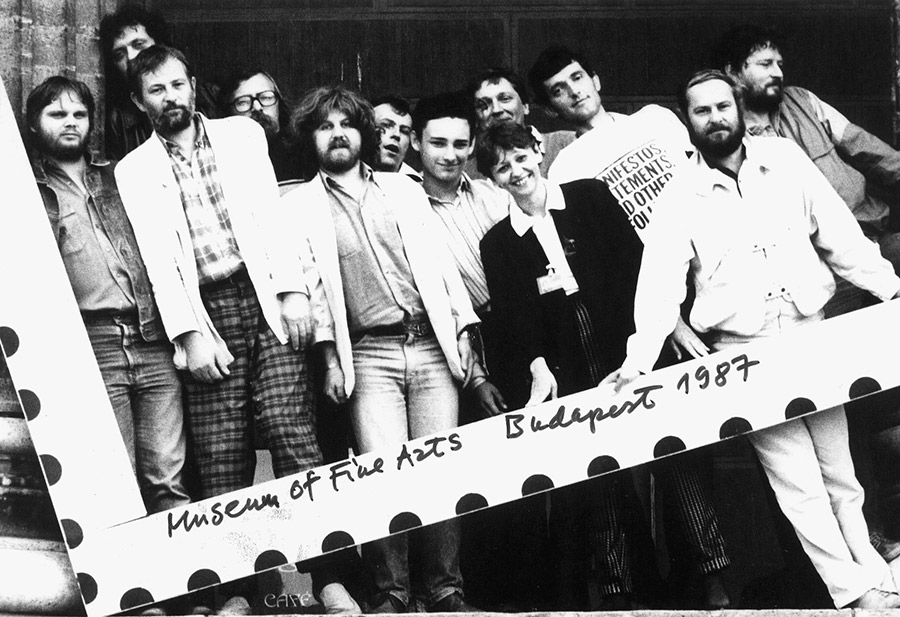

Symposium about the underground art of the 1970s and 1980s,
its international context, importance and research
AID CONCEPT - festival to save the documents of underground art
1 October 2005, GÖDÖR CLUB, Budapest
● STAMP IMAGES ● ARTISTS' STAMPS ● AID CONCEPT ● Judit Geskó ●
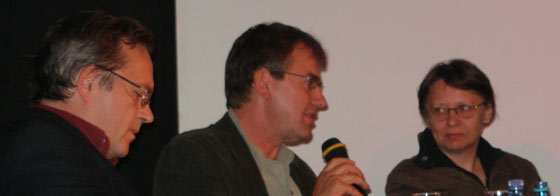
[Gábor Klaniczay] [Judit Geskó]
Judit Geskó: "I am quite certain that you can only achieve things if you know the right people, and it will be no different in the case of Artpool either. If a dozen or two dozen people can somehow persuade the town hall, the cultural governance and the potential sponsors to support Artpool, then it will happen; if not, it won’t. We don’t have the same opportunity, actually, we have less now than fifteen, sixteen and seventeen years ago, because now we no longer have the backing or coercive force that we had in the past, we no longer have the circumstances which we could convert into a kind of moral capital."

